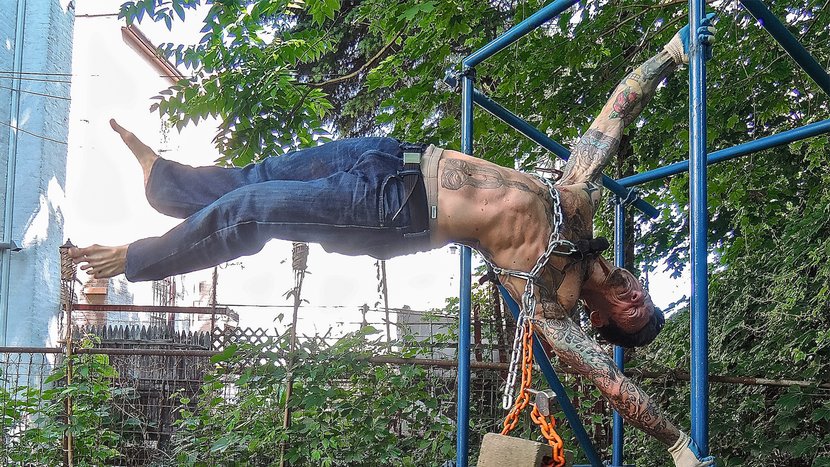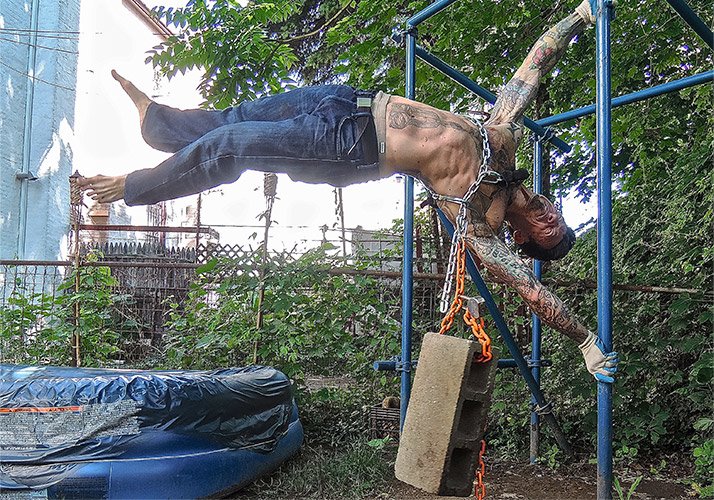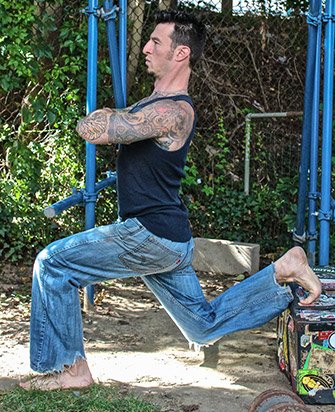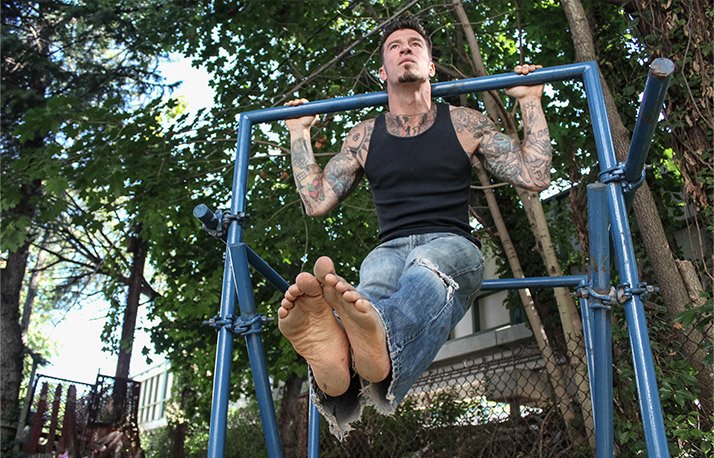
Do More With Less: The 3 Home Gym Essentials
A stacked gym with every fitness tool known to man looks cool, but how much of it are you really going to use? Keep these three fundamentals at home, and rest easy knowing you can get strong no matter what!
The subject of what constitutes the best gym equipment is a highly contentious one. On one hand, you want to allow for as many challenging and effective workouts as possible, and you want equipment that you won't outgrow in a few weeks' time. But when it comes to training at home, you must also factor in space, time, and convenience—and that's to say nothing of affordability.
Ask yourself these questions: "Do I really need a giant, flexing machine that takes up half my house and breaks the bank?" or "Would my neighbors mind the clanging of a full set of Olympic weights in my tiny third-floor apartment?" It's amazing how many people answer both questions wrong and don't find out until it's become a huge pain.
We live in a culture where manufacturers and marketing departments are usually the loudest voices heard when it comes to what is best. They would have you believe that a perfect home gym for getting lean, muscular, and powerful requires numerous gadgets, gears, and systems. I'm here to tell you that's not the case. Less can be more.
All you need can be broken down into only three basic components. That's right: three. Here they are: something heavy, something to step on, and something to hang from. Let's break them down.
Something Heavy
This category includes things like barbells, kettlebells, and sandbags, but it can include just about anything else heavy, too. I've seen odd objects like water bottles and tires used to achieve monstrous results.
The purpose of strength training is to increase the challenge facing the body's muscles, bones, and connective tissue, with the overall goal of building resilience. When it comes to overall strength, a tire may be even better than a barbell in certain situations, because it requires more grip, forearm, and core power just to pick the thing up!

Something else to take into account when selecting home gym equipment is adaptability. If you have, say, one 45-pound dumbbell—or a cinderblock weighing the same amount—there is plenty you can do with it. An object of appropriate weight can be used for legs, shoulders, back, arms, and just about every other body part. A good, heavy weight can also be used in a series of exercises to work more muscles in less time—not to mention firing up the heart rate!
Let's not forget, part of the reason you need a home gym is because your time is valuable. Maybe you don't have the time or desire to commute, so the more you do with less, the better. Remember, the more specialized the equipment, the more limited it is in its applications.

Something to Step On
This item can be a bench—of either the weightlifting or park variety—a simple step or plyo box, or any other platform that is strong and solid enough to support both your body weight and that of your heavy object. Weight benches sometimes include an adjustable incline, which is definitely useful for certain specific exercises, but I wouldn't consider it a necessity.
Personally, I use a weathered but sturdy reinforced box in my home gym. It takes all the damage I throw at it and continues to do what I ask. If we're talking about "need" rather than "want," something like this will get the job done for you, as well.
Regardless of what kind of step you choose, you'll quickly find that it can be used for far more than just stepping up. At the least, a bench can be used for seated variations of presses, extensions, and curls. You could also put your feet on it, with hands firmly planted on the ground, and try some decline push-ups for a fierce upper-body workout. Jump over it for explosive plyometric drills. Do dips off the edge. I can keep brainstorming indefinitely here.
Bottom line: This piece of equipment is far more versatile than it may appear. Use it for all it's worth.
Something to Hang From
Sadly, this essential item often gets overlooked. Not only are pull-up bars tragically absent from many home gyms, they're often MIA in many commercial establishments, too! That's a shame, because nothing can take the place of the mighty pull-up and its many varieties. And by extension, there's always something else you can aspire to achieve with your bar—like the mightier muscle-up, provided you have enough overhead clearance.
When you include something to hang from in your home gym, you open the door to an unlimited amount of ab exercises, including the hanging leg raise and its advanced variations like toes-to-bars and windshield wipers. You can also bring your step over, put your heels on it, and grab that bar for some bodyweight rows. The possibilities are pretty much endless.
There are many styles of bars, and I've had them all at one time or another. The door frame variety is a no-brainer when space is limited, whereas the self-supported "power tower" works better for performing dips. My current favorite is a simple, high, freestanding system, like the backyard pull-up bar which I've trained on for years. No matter which one works best for your particular situation, make sure you don't leave this piece out.

Something More?
These three items are just the starting point. There are plenty of optional pieces, such as a mat, ab wheel, or systematic weights, all of which can come in handy. They're great, but what you see above is all that is necessary.
More specific goals will require specific equipment. For example, if you want to deadlift 500 pounds, you will need gear that supports that goal, just like you'll need a pool if you want to swim laps. Feel free to include those things, too, but keep it simple and practical.
Oh yeah, here's one more thing: Don't forget about the "gym" itself! Every room and backyard comes with walls, yard space, or floors as standard equipment. Use them for things like handstand push-ups, isometric holds, bridging, planks, and countless other abdominal exercises. The only limitations are the ones we impose on ourselves.
Do you have a wicked home setup you want to brag about? Let me know in the comments!

